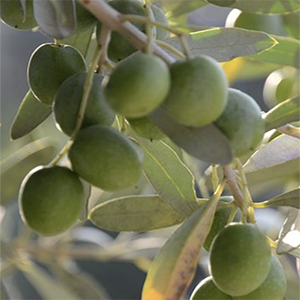Should extra virgin olive oil production change the approach? A systematic review of challenges and opportunities to increase sustainability, productivity, and product quality

Published: 22 March 2023
Abstract Views: 1338
PDF: 706
HTML: 102
HTML: 102
Publisher's note
All claims expressed in this article are solely those of the authors and do not necessarily represent those of their affiliated organizations, or those of the publisher, the editors and the reviewers. Any product that may be evaluated in this article or claim that may be made by its manufacturer is not guaranteed or endorsed by the publisher.
All claims expressed in this article are solely those of the authors and do not necessarily represent those of their affiliated organizations, or those of the publisher, the editors and the reviewers. Any product that may be evaluated in this article or claim that may be made by its manufacturer is not guaranteed or endorsed by the publisher.
Similar Articles
- Xingye Zhu, Jing Konng, Alexander Fordjour, Joseph Kwame Lewballah, Frank Agyen Dwomoh, Samuel Anim Ofosu, Junping Liu, Hydraulic performance assessment on dynamic fluidic and complete fluidic sprinklers under indoor and outdoor conditions , Journal of Agricultural Engineering: Vol. 55 No. 3 (2024)
- Pietro Picuno, Vernacular farm buildings in landscape planning: a typological analysis in a southern Italian region , Journal of Agricultural Engineering: Vol. 43 No. 3 (2012)
- Alessandro Parenti, Lorenzo Guerrini, Lisa Granchi, Manuel Venturi, Stefano Benedettelli, Fabrizio Nistri, Control of mixing step in the bread production with weak wheat flour and sourdough , Journal of Agricultural Engineering: Vol. 44 No. s2 (2013): Proceedings of the 10th Conference of the Italian Society of Agricultural Engineering
- Salvatore Barbagallo, Giuseppe Luigi Cirelli, Simona Consoli, Vincenzo Tamburino, Attilio Toscano, REMOTE SENSING AND SURFACE ENERGY FLUX MODELS TO DERIVE EVAPOTRANSPIRATION AND CROP COEFFICIENT , Journal of Agricultural Engineering: Vol. 39 No. 2 (2008)
- D. Ricauda Aimonino, P. Gay, L. Comba, Application of Computer Vision for quality control in frozen mixed berries production: colour calibration issues , Journal of Agricultural Engineering: Vol. 44 No. s2 (2013): Proceedings of the 10th Conference of the Italian Society of Agricultural Engineering
- L.P. Caliandro, R.V. Loisi, P. Dal Sasso, Historical road system and farmhouses in Apulia , Journal of Agricultural Engineering: Vol. 44 No. s2 (2013): Proceedings of the 10th Conference of the Italian Society of Agricultural Engineering
- Salvatore Barbagallo, Giuseppe L. Cirelli, Alessia Marzo, Mirco Milani, Attilio Toscano, Effect of different plant species in pilot constructed wetlands for wastewater reuse in agriculture , Journal of Agricultural Engineering: Vol. 44 No. s2 (2013): Proceedings of the 10th Conference of the Italian Society of Agricultural Engineering
- Luca Mauri, Eugenio Straffelini, Sara Cucchiaro, Paolo Tarolli, UAV-SfM 4D mapping of landslides activated in a steep terraced agricultural area , Journal of Agricultural Engineering: Vol. 52 No. 1 (2021)
- R. Oberti, M. Marchi, P. Tirelli, A. Calcante, M. Iriti, M. HoÄevar, J. Baur, J. Pfaff, C. Schütz, H. Ulbrich, Selective spraying of grapevine’s diseases by a modular agricultural robot , Journal of Agricultural Engineering: Vol. 44 No. s2 (2013): Proceedings of the 10th Conference of the Italian Society of Agricultural Engineering
- Bruno Bernardi, Giuseppe Zimbalatti, Andrea Rosario Proto, Souraya Benalia, Antonio Fazari, Paola Callea, Mechanical grading in PGI Tropea red onion post harvest operations , Journal of Agricultural Engineering: Vol. 44 No. s2 (2013): Proceedings of the 10th Conference of the Italian Society of Agricultural Engineering
<< < 34 35 36 37 38 39 40 41 42 43 > >>
You may also start an advanced similarity search for this article.

 https://doi.org/10.4081/jae.2023.1479
https://doi.org/10.4081/jae.2023.1479







